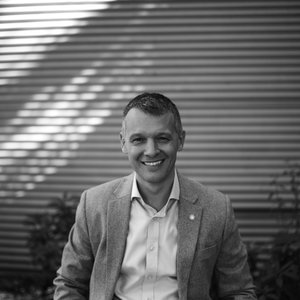
Education and
the LGBTQ+ Community
Key message
Key challenges
- A significant proportion of LGBTQ+ students experience homophobic and transphobic violence in school. This is shown consistently in data from Africa, Asia, Europe, Latin America and the Caribbean, North America and the Pacific, with the proportion affected ranging from 16% in Nepal to 85% in the US. 83% of LGBTQ+ students in the US say they have been harassed or assaulted at school.
(UNESCO, 2016) (GLSEN, 2021) - LGBTQ+ students report a higher prevalence of bullying at school than their non-LGBTQ+ peers. In New Zealand, lesbian, gay and bisexual students were three times more likely to be bullied than their heterosexual peers; in Norway, 15-48% of lesbian, gay and bisexual students reported being bullied compared to 7% of heterosexual students.
(UNESCO, 2016) - Students targeted are more likely to feel unsafe in school, miss classes or drop out. In the U.S., 70% of LGBTQ+ students felt unsafe at school; in Thailand, 31% of students who were teased or bullied for being or being perceived to be LGBTQ+ had reported an absence from school in the past month, and in Argentina, 45% of transgender students dropped out of school. Over the course of one month, 1/3 of US LGBTQ+ students missed at least one day of school due to feeling unsafe.
(UNESCO, 2016) (GLSEN, 2021) - LGBTQ+ students consistently report a higher prevalence of violence compared with their non-LGBTQ+ peers. Male students who fail to conform to ‘masculine’ norms – i.e. those who are gay or bisexual, and male-to-female transgender students – seem more likely to be the targets of violence.
(UNESCO, 2016) - LGBTQ+ students avoid school activities when they feel unsafe. 49% of young LGBTQ+ respondents said they sometimes chose not to participate in class discussions in a 2013 European survey.
(Formby, 2013) - The responses of schools to the victimisation of LGBTQ+ pupils is unequal. In the UK, only 29% of bullied LGBTQ+ pupils say that teachers intervened when they were present during the bullying. 68% report that their schools say homophobic and biphobic bullying is wrong, but only 41% report that their schools say transphobic bullying is wrong.
(Stonewall, 2017) - Bullying can negatively impact future education prospects. In the UK, 52% of bullied pupils felt that homophobic, biphobic and transphobic bullying has had a negative effect on their plans for future education.
(Stonewall, 2017) - Discrimination of LGBTQ+ children by their families, impacts their education. A 2022 report of the treatment of the LGBTQ+ community in Iraq, documented 21 cases where children were prohibited from leaving their homes by their parents after being suspected of being gay.
(Human Rights Watch, 2022)
Make the case
- Teachers play a crucial role in supporting LGBTQ+ youth. In Canada, students in schools with policies that supported them, were over 65% less likely to think about or attempt suicide.
(UNESCO, 2023) - Education can reduce bullying and harassment. Students who learn about LGBTQ+ issues in the curriculum report less harassment.
(Trevor Project, 2019) - Education policies and curricula can increase a sense of belonging. Inclusive education policies and supportive curricula can reduce homophobic bullying and lead to increased perceptions of school safety and more school belonging.
(McDermott et al, 2023) - Quality education creates more tolerant societies. A global study found that boys and young men who are more educated are less homophobic. In the UK, those with a higher level of education are found to be more accepting of homosexuality than those with a lower level of education.
(ICRW, 2011) (Roi et al, 2018) - Better education increases tolerance of sexual orientation. In Argentina, people with a secondary education were nearly one quarter less likely to express homophobic attitudes than those with a primary education.
(EFA GMR, 2014) - Supportive schools make LGBTQ+ youth feel safer. When LGBTQ+ youth view school personnel as supportive, they feel safer, report less absenteeism, maintain higher grade point averages and experience less victimisation due to their identity.
(Russel et al, 2021)
Key opinions

Fabrice Houdart
Founder and Executive Director, Association of LGBTQ+ Corporate Directors
The single most important channel to overcome intolerance, discrimination and violence against LGBTQ people is through education and the exposure to different life experiences and viewpoints that it offers. Advancement in education is part of the recipe for social change that led to a radical shift in public attitudes on LGBTQ inclusion we witnessed in many parts of the world.

David Mixner
Activist
Knowledge is power. Power leads to Freedom. Freedom leads to personal self-esteem and a more loving society. Education makes all of this possible. Not educating our children is dooming them to years of oppression and discrimination.
Key talking points
- LGBTQ+ students are significantly more likely to be bullied at school than their heterosexual peers.
- Homophobic and transphobic violence affects students’ education, employment prospects and wellbeing.
- Safe schools increase school attendance for LGBTQ+ students.
- Education promotes appreciation and respect for differences, contributing towards an end to discrimination for LGBTQ+ students.
Share This Resource
Similar Themes



